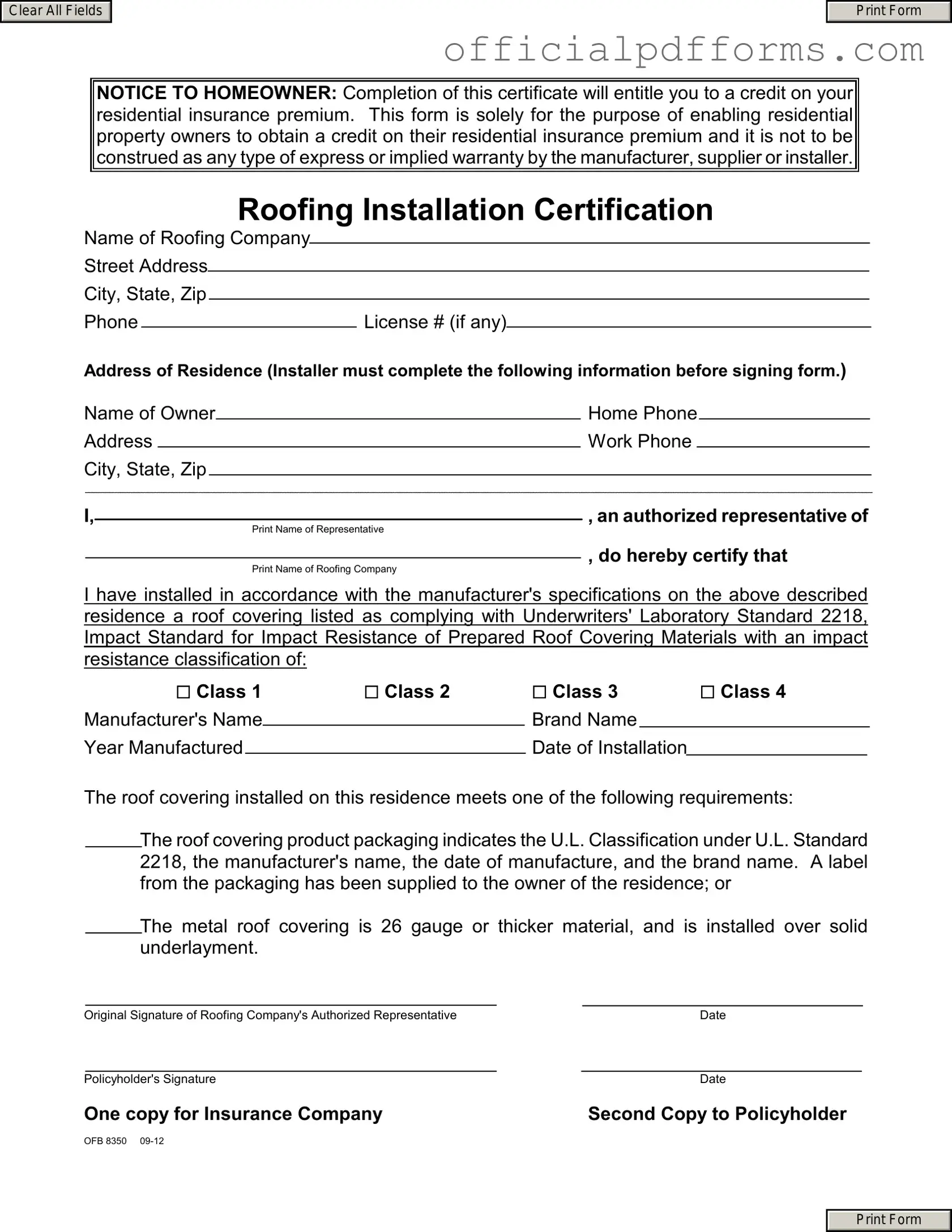The Roofing Certificate form is designed to help homeowners obtain a reduction in their residential insurance premiums. By completing this form, homeowners can certify that their roof meets specific impact resistance standards, which insurers often reward with lower premiums.
This form must be completed by an authorized representative of the roofing company that installed the roof. Homeowners should ensure that the roofing company provides all necessary information before signing the form.
The form requires several key pieces of information, including:
-
Name and contact details of the roofing company
-
License number of the roofing company, if applicable
-
Name and contact information of the homeowner
-
Details about the roofing materials used, including brand name and impact resistance classification
-
Date of installation
What is the significance of the Underwriters’ Laboratory Standard 2218?
This standard classifies roofing materials based on their impact resistance. Roof coverings that comply with this standard are rated from Class 1 to Class 4, with Class 4 indicating the highest level of impact resistance. Insurers often provide premium discounts for roofs rated Class 3 or Class 4.
Once the form is completed and signed by the roofing company’s authorized representative, the homeowner should retain one copy for their records. The second copy must be submitted to their insurance company to apply for the premium reduction.
Any intentional misrepresentation on the form can be considered fraud. If the form is filled out incorrectly or misleadingly, the homeowner may not receive the intended premium reduction, and they could face legal consequences.
While the form itself does not specify a strict deadline, it is advisable to submit it as soon as possible after the roof installation. Homeowners should check with their insurance provider for any specific timelines related to premium reductions.
No, the form must be completed and signed by an authorized representative of the roofing company. Homeowners cannot fill it out independently, as the certification relies on the roofing company’s expertise and compliance with the necessary standards.
